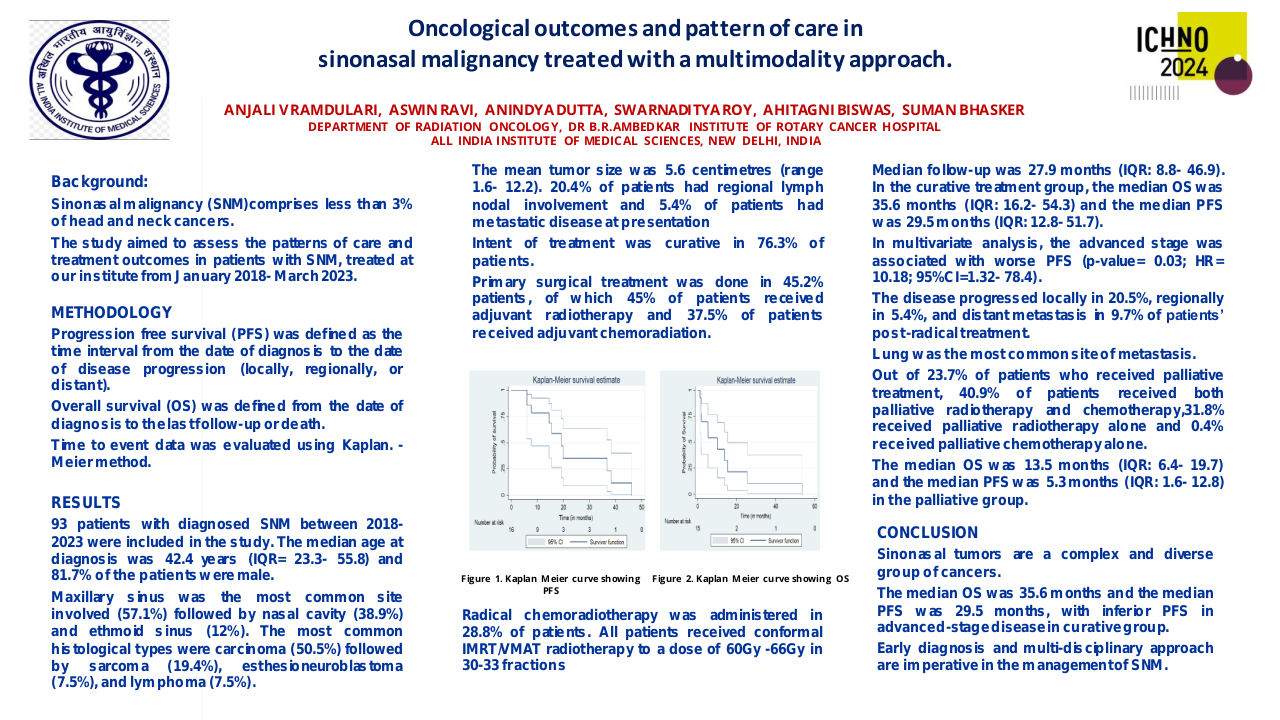Early mortality following induction chemotherapy and concurrent chemoradiotherapy for nasopharyngeal cancer
Purpose/Objective
Induction chemotherapy followed by concurrent chemoradiotherapy is a standard in the treatment of advanced, nonmetastatic nasopharyngeal carcinoma. This approach significantly improve survival, and it is accepted as a standard of care for stage III-IVA disease. However, this strategy is associated with considerable acute toxicity and a risk of short-term mortality.
The aims of this study were to determine the rate and to characterize the causes of early death, in order to define the subset of patient with higher risk of early mortality.
Material/Methods
We conducted a single-center retrospective study including patients, diagnosed with locally advanced non-metastatic undifferentiated carcinoma of the nasopharynx treated with induction chemotherapy followed by concurrent chemoradiotherapy, in the National Institute of Oncology in Morocco, from 1 January 2018 until 31 December 2021.
Early death was defined as any death during the course of therapy or within 6 months following the end of chemoradiotherapy.
Clinicopathological characteristics was collected, and their prognostic value affecting early mortality was tested using univariate and multivariate Cox proportional hazards models.
Results
A total of 263 patients were included (median age 55, range 21-77 years, 61.5% male). Disease were predominately stage III (68.2 %) and 31.8% were stage IVA in the AJCC 8th edition.
Induction chemotherapy consisted of 3 cycles of cisplatin-based chemotherapy followed by concurrent chemoradiotherapy (Volumetric-modulated arc therapy plus platinum weekly chemotherapy).
22 patients (8.4%) did not complete all three cycles of induction chemotherapy, and only 195 of 263 patients (74.1%) received concurrent chemoradiotherapy with the full planned course of chemotherapy.
Early death occurred in 18 patients (6.8%), of these 15 (83.3%) patients died of a treatment-related cause. The incidence of acute adverse events of grade ≥ 3 was 78.5%.
Age, low performance status, and low body mass index before treatment were significantly correlated with the occurrence of early death in multivariate analysis.
At a median follow-up of 41.5 months, the 2-year relapse-free survival and overall survival rates were 76.1% and 82% respectively.
Conclusion
Almost 7% of patient with advanced, nonmetastatic nasopharyngeal carcinoma will die within the 6 months following the end of treatment.
Identification of patients who are at risk may help in minimizing the risk of early death, by optimizing performance and nutritional status before therapy, along with the proposition of a less aggressive treatment strategy in older patients.






